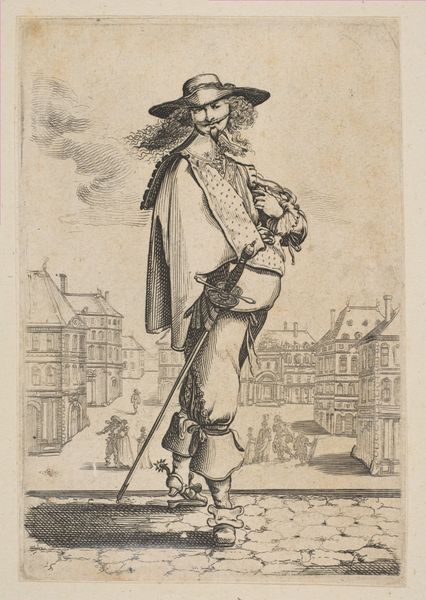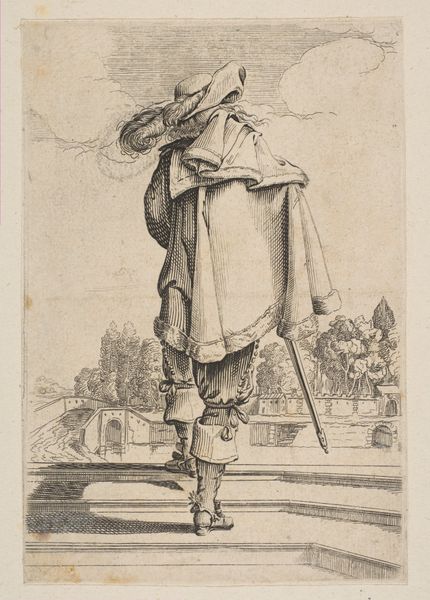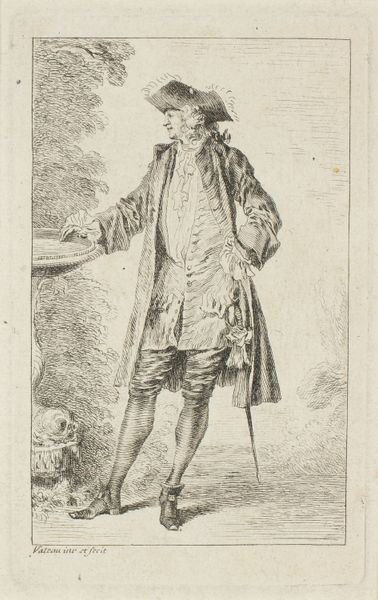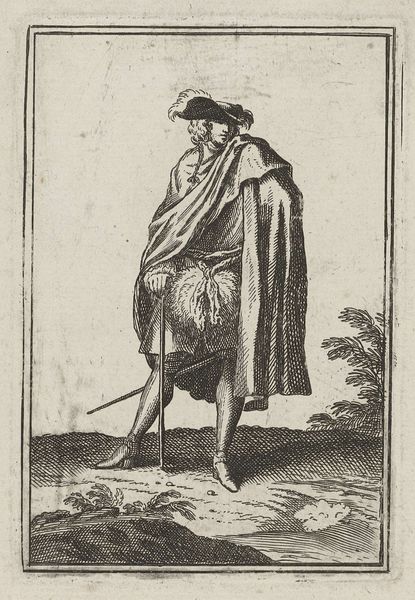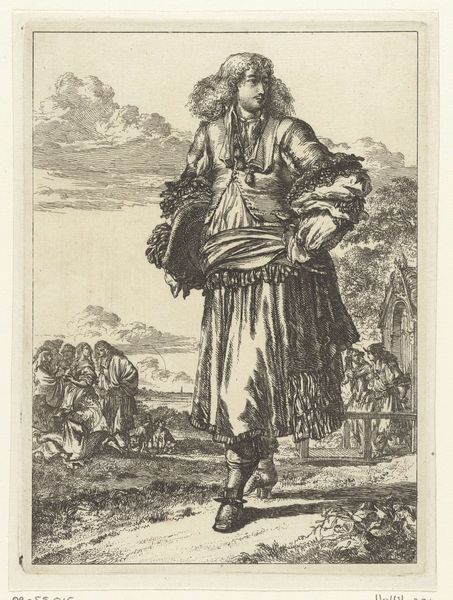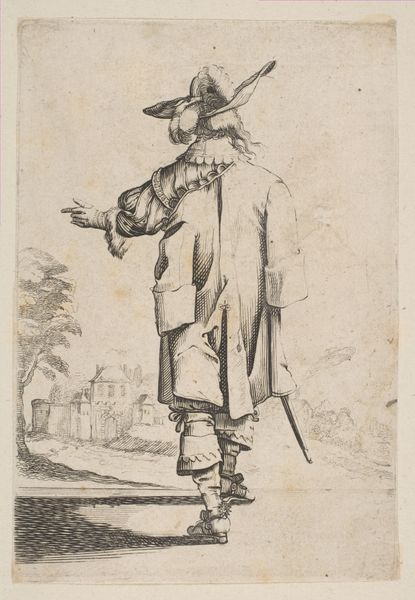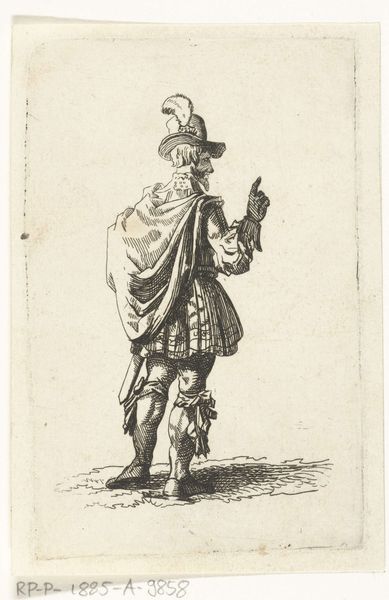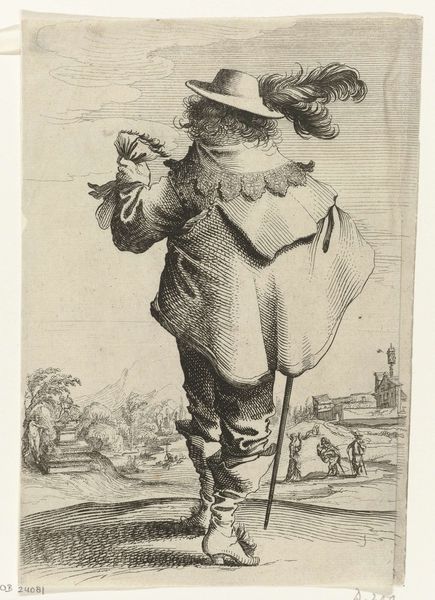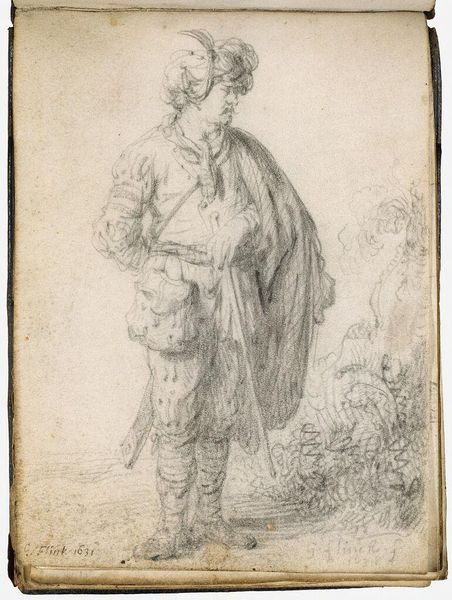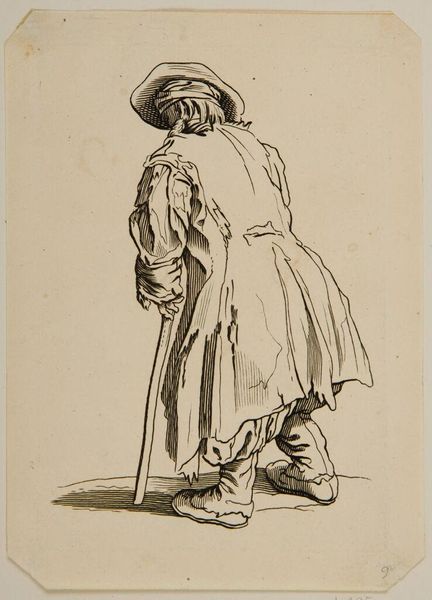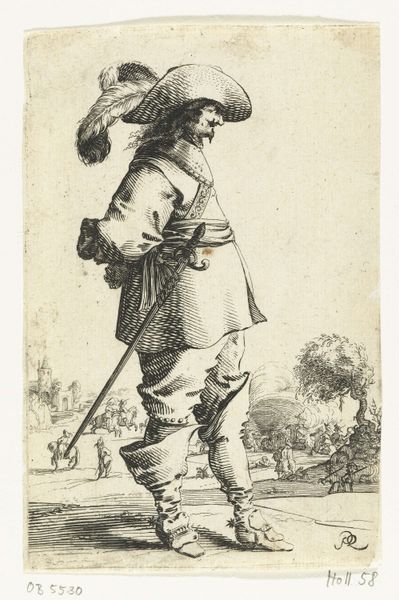
print, etching
#
portrait
#
quirky sketch
#
dutch-golden-age
#
mechanical pen drawing
# print
#
pen illustration
#
pen sketch
#
etching
#
pencil sketch
#
landscape
#
figuration
#
personal sketchbook
#
ink drawing experimentation
#
pen-ink sketch
#
line
#
sketchbook drawing
#
genre-painting
#
storyboard and sketchbook work
Dimensions: height 141 mm, width 97 mm
Copyright: Rijks Museum: Open Domain
Editor: Here we have Salomon Savery's "Standing Cavalier," an etching from between 1630 and 1665. It feels very much like a fashion plate, a study in surfaces and textures. What stands out to you about this work? Curator: It's fascinating to consider this piece through the lens of its production. Look closely at the etched lines. Etching as a printmaking technique democratized image production, allowing for wider circulation and influencing fashion and social norms. Notice how the clothing dominates the figure; how much emphasis is given to the folds, the textures, and the embellishments. What does that prioritize, do you think? Editor: It does feel like the figure is almost secondary to the clothing. The details of the cavalier's costume—the feathered hat, the ruffled collar, even the bows on his shoes—take center stage. Are you saying that this print is less about the individual and more about the material culture of the time? Curator: Precisely. Consider the labor involved in producing these garments, and the resources required. This wasn’t just art for art’s sake, but also about constructing and reinforcing social hierarchies and aspirations. The very act of creating and distributing these prints became part of the system it depicted. What do you make of the figures in the background? Editor: The smaller figures in the landscape seem to echo the cavalier's sense of privileged leisure, maybe even commenting on who could afford such extravagant displays? It seems like the print overall serves as a document of production and consumption, doesn’t it? Curator: Exactly. It shows the reciprocal relationship of production and display – where art doesn't just represent a social structure but becomes deeply interwoven in sustaining it. What have you taken away from examining Savery's print? Editor: Thinking about art this way helps to really contextualize the decisions made by the artist, but it goes deeper than just art, doesn't it? It speaks volumes about class structures and labour. Thanks! Curator: Indeed, by viewing it through its material processes and the society that both enabled and consumed it, the image offers layers of understanding that extend far beyond its aesthetic appeal.
Comments
No comments
Be the first to comment and join the conversation on the ultimate creative platform.

